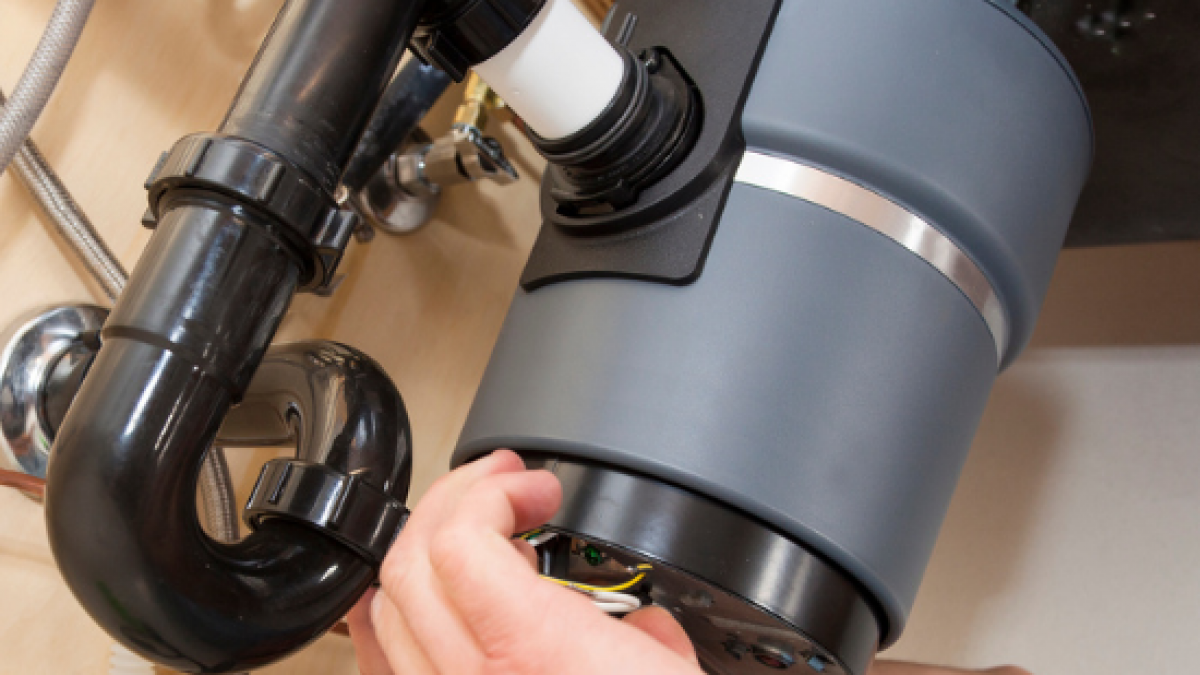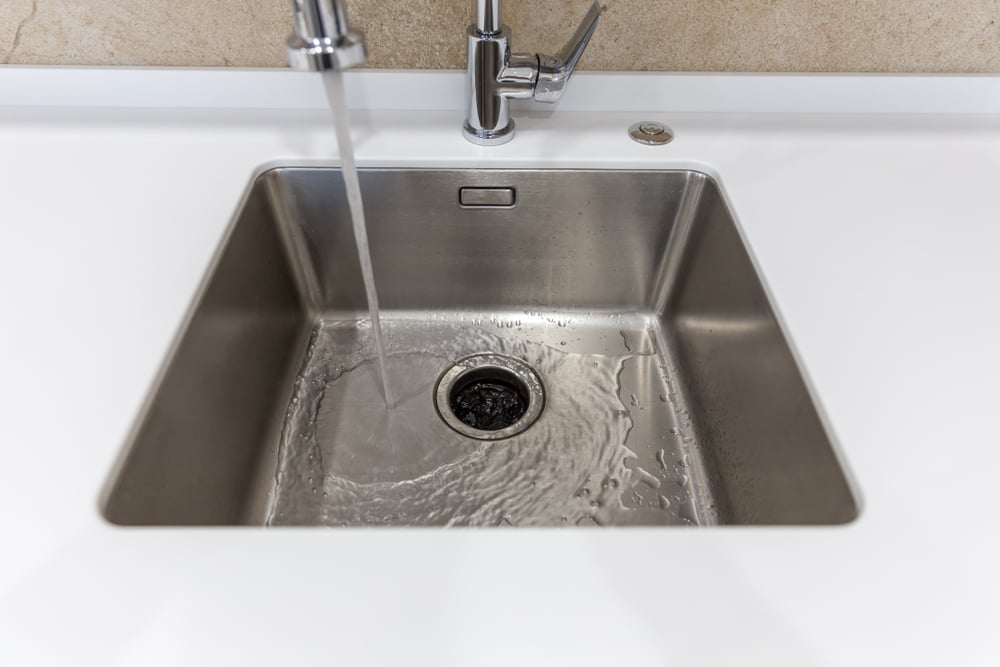The article author is making a number of good annotation regarding Garbage Disposal Leaking From Bottom overall in the article in the next paragraphs.

Garbage disposals are vital cooking area appliances that help in dealing with food waste successfully. Nonetheless, a dripping waste disposal unit can be a frustrating and untidy issue to manage. Fortunately, several leakages can be taken care of easily with a couple of basic actions. In this write-up, we will discuss how to deal with a leaking garbage disposal efficiently.
Intro
Waste disposal unit are installed under kitchen sinks and are developed to shred food waste right into smaller pieces, enabling it to go through the plumbing system conveniently. While these tools are usually trusted, leaks can happen gradually due to deterioration, loose connections, or damage to the system.
Step-by-Step Overview to Taking Care Of a Leaking Garbage Disposal
Shut off the Power
Before attempting any type of fixings, make sure that the power to the waste disposal unit device is switched off to stop the threat of electric shock.
Situate the Leakage
Recognize the exact place of the leak and establish the reason
Tighten Links
Make use of a wrench to tighten any loose connections in between the disposal device and the plumbing system.
Replace Seals or Gaskets
If the leak is due to worn seals or gaskets, get rid of the old components and change them with brand-new ones.
Patching Cracks or Holes
For cracks or holes in the disposal system, use epoxy or an appropriate patching product to seal the damaged location.
Identifying the Source of the Leak
Prior to attempting to deal with a dripping garbage disposal, it is essential to determine the resource of the leakage. This can normally be done through visual evaluation or by performing straightforward tests.
Visual Inspection
Check the waste disposal unit unit very carefully for any indicators of water leak. Pay close attention to areas around seals, gaskets, and connection factors.
Evaluating for Leaks
One method to examine for leaks is by running water through the disposal system and looking for any noticeable signs of leakage.
Usual Sources Of Leaks in Garbage Disposals
Worn Seals and Gaskets
Seals and gaskets play a critical role in preventing water from dripping out of the garbage disposal. Gradually, these parts can degrade, leading to leakages around the disposal device.
Loose Links
The connections in between the garbage disposal and the plumbing system can come to be loose over time, causing water to leak out throughout operation.
Splits or Holes in the Disposal Device
Physical damage to the garbage disposal, such as splits or holes in the housing, can additionally lead to leakages.
Devices and Materials Needed for Dealing With a Dripping Garbage Disposal
Before beginning the repair work procedure, collect the required devices and materials, including a screwdriver, adjustable wrench, plumber's putty, replacement seals or gaskets, and epoxy or patching product for fixing fractures or openings.
Testing the Waste Disposal Unit After Repair Work
Once the repair is full, check the garbage disposal by running water via it to guarantee that the leakage has been resolved.
Preventive Upkeep Tips to Avoid Future Leakages
To avoid future leakages, it is important to execute routine upkeep on your waste disposal unit. This consists of maintaining it tidy, preventing placing non-food things or tough objects down the disposal, and regularly checking for leaks or various other concerns.
Final thought
Finally, dealing with a leaking waste disposal unit is a fairly straightforward process that can be completed with standard devices and materials. By complying with the steps detailed in this article and exercising precautionary maintenance, you can maintain your garbage disposal in good working problem and stay clear of expensive repair services in the future.
HERE’S HOW TO FIX YOUR GARBAGE DISPOSAL
WHAT TO DO IF SOMETHING IS STUCK IN YOUR GARBAGE DISPOSAL
If the impeller won’t turn, there’s probably something stuck in the disposal. It could be a steak bone or peach pit, although plumbers report pulling all sorts of inappropriate objects out of disposals, such as bottle caps or aluminum foil. Make sure power to the disposal is off, and look inside to see if you can see the source of the jam.
Never stick your fingers in a disposal. Pull out anything you see with tongs or pliers.
If the disposal still won’t work, it may be time to call a plumber or consider buying a new disposal. GEM Plumbing & Heating is here for all of your garbage disposal needs.
WHAT TO DO IF YOUR GARBAGE DISPOSAL DRAIN IS CLOGGED
Take everything out from underneath your sink and put a bucket or other container under your disposal to catch any water that drains out. Disconnect your disposal from the power supply. If it’s plugged into a wall outlet, unplug it. If it’s hardwired into an electrical box, go to the electrical panel and turn off the breaker for the disposal. Pour ¼ cup of baking soda into the drain, followed by ½ cup of white vinegar. Give the solution a few minutes to fizz and do its work. Look into the disposal with a flashlight to see if you can see an object that might be causing the clog. If you see it, remove it using tongs or pliers. MORE TIPS ON DEALING WITH A CLOGGED GARBAGE DISPOSAL
Never use drain cleaner in a garbage disposal. It can damage the plastic parts inside the disposal. You can also be splashed with the caustic liquid while working to clear the clog. Beware! Never stick your fingers into a garbage disposal. Trust us — not a good idea. In many instances, your dishwasher drains through your garbage disposal. This allows the disposal to grind any large food particles that may be drained out of your dishwasher. There are some jurisdictions, however, where the plumbing code prohibits such a connection. WHAT TO DO WHEN YOUR DISHWASHER DRAINS THROUGH THE DISPOSAL
Run some water in the sink so your plunger has at least a ½-inch of water to create a seal and plunge vigorously up and down several times. You may need to repeat this several times. Run hot water down the drain to clear any residue that remains.

Do you enjoy more info about Why Is ? Try to leave feedback down below. We'd be interested to know your insights about this write-up. We are looking forward that you come back again in the near future. You should set aside a second to distribute this article if you liked it. I recognize the value of reading our article about Why Is .
Call Today